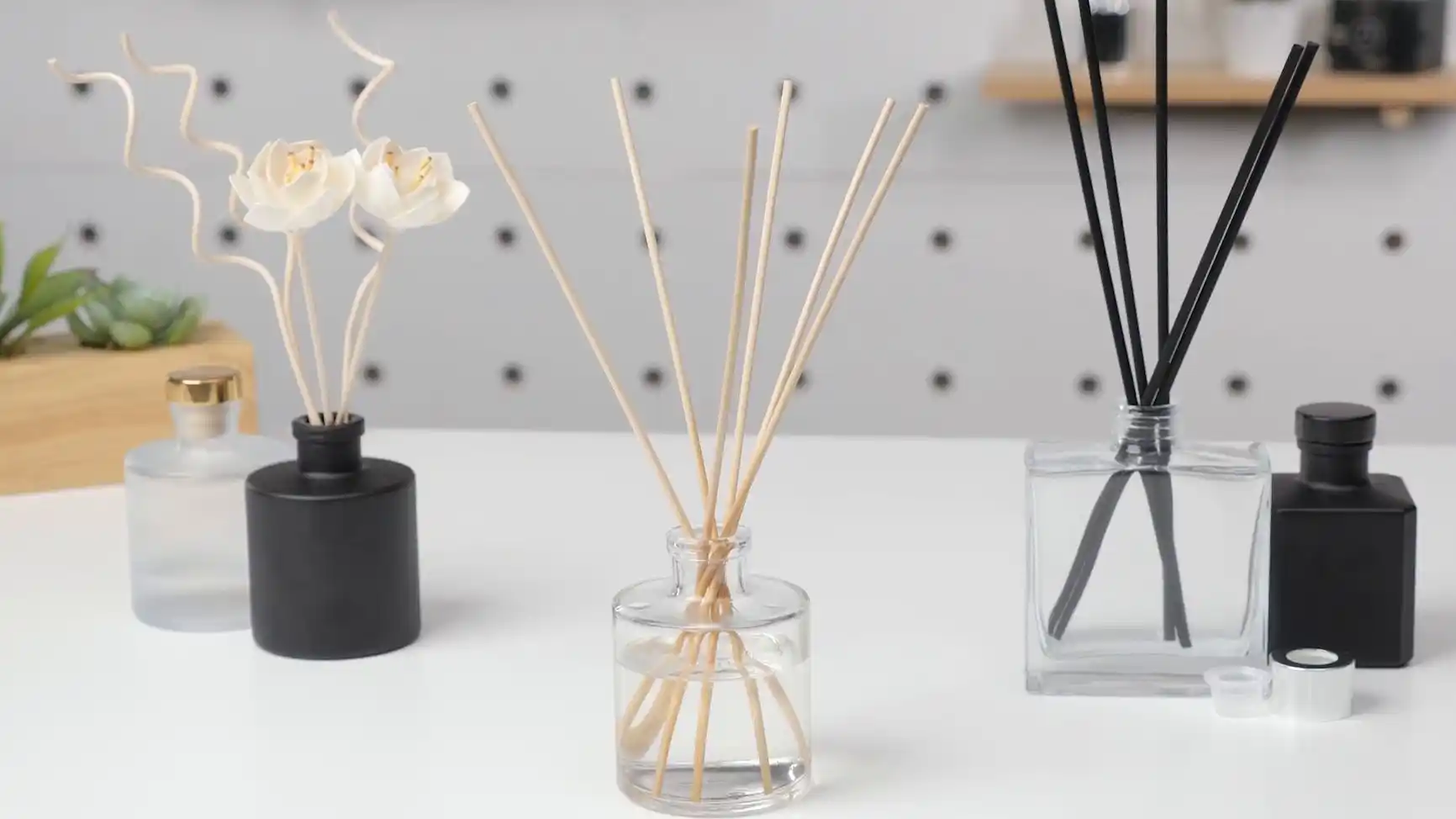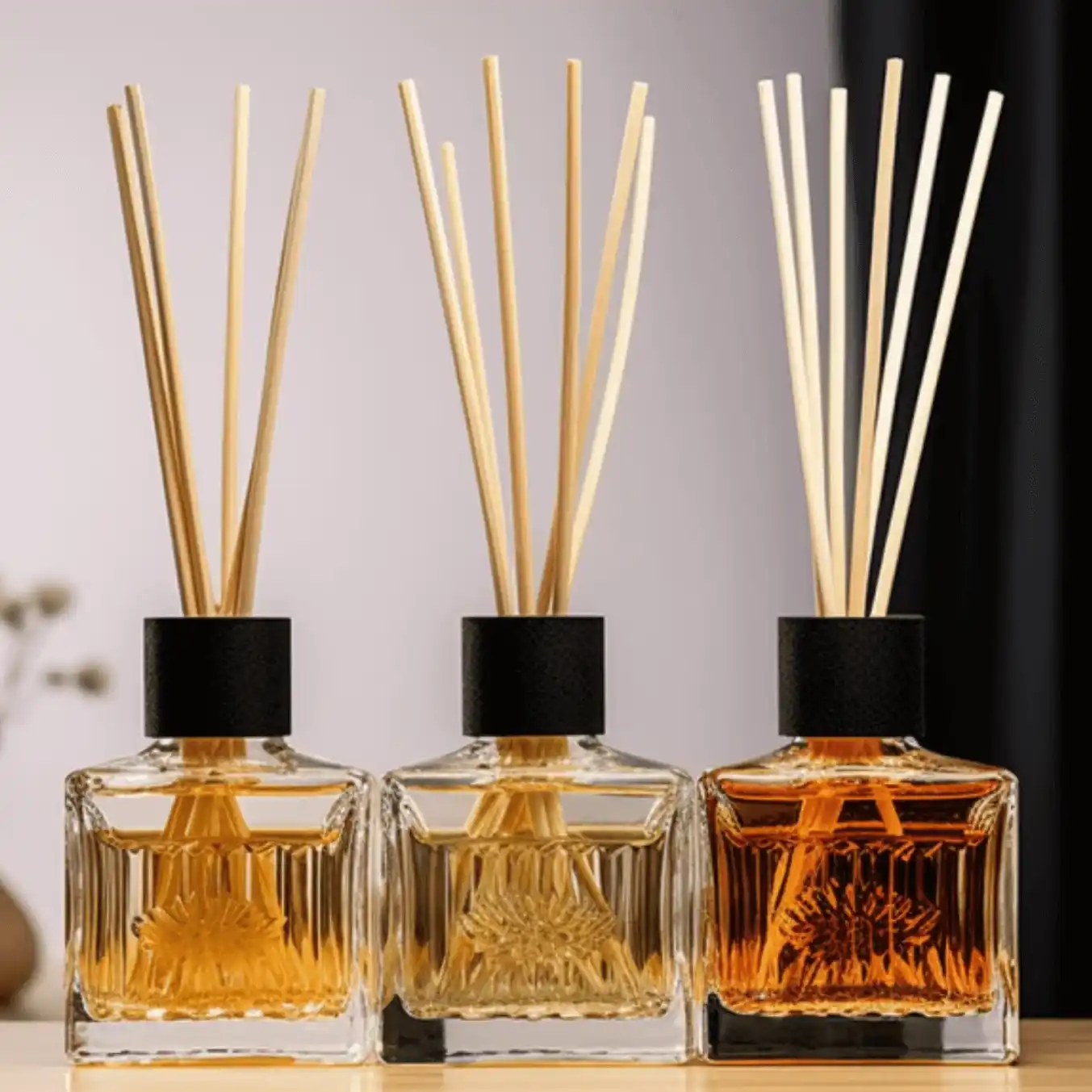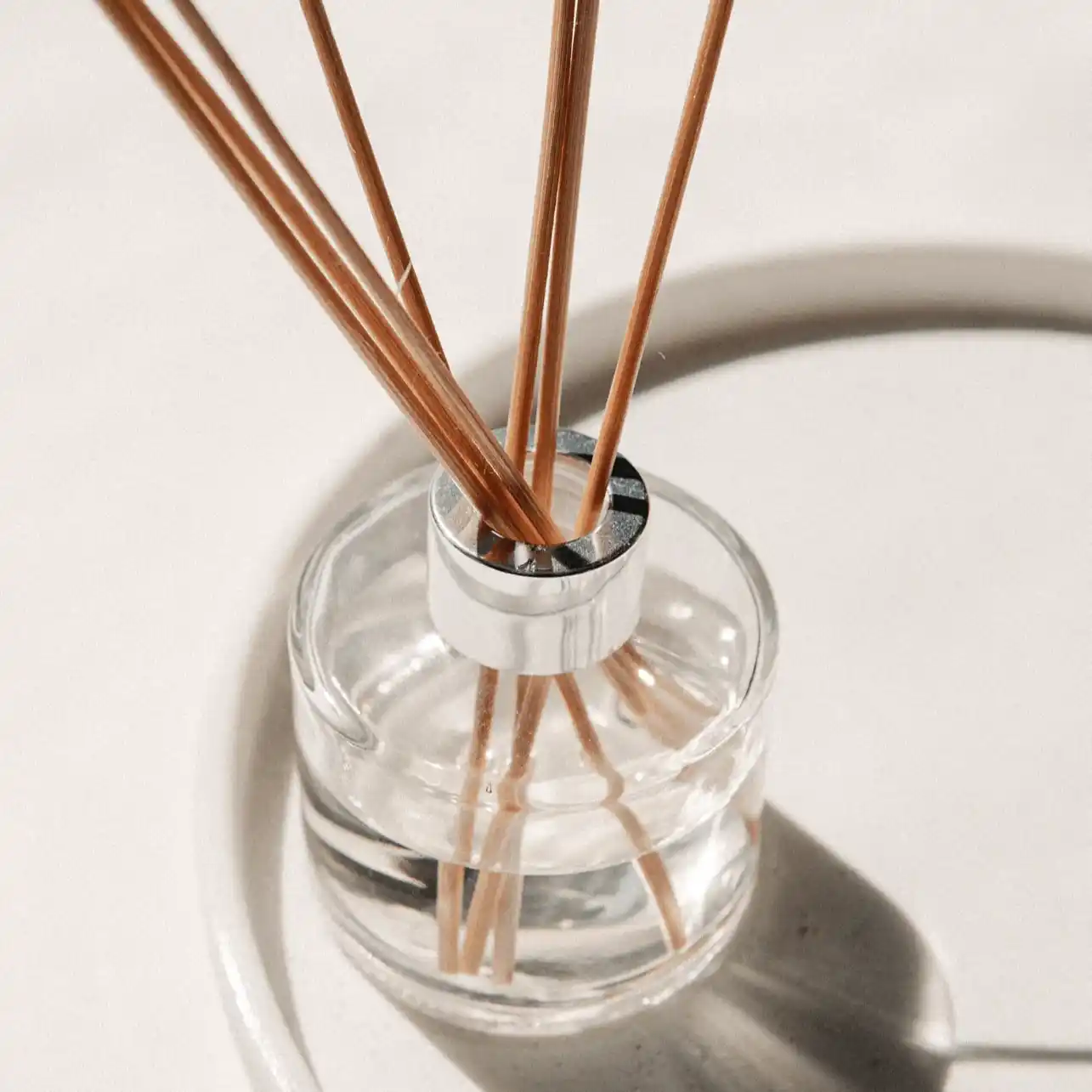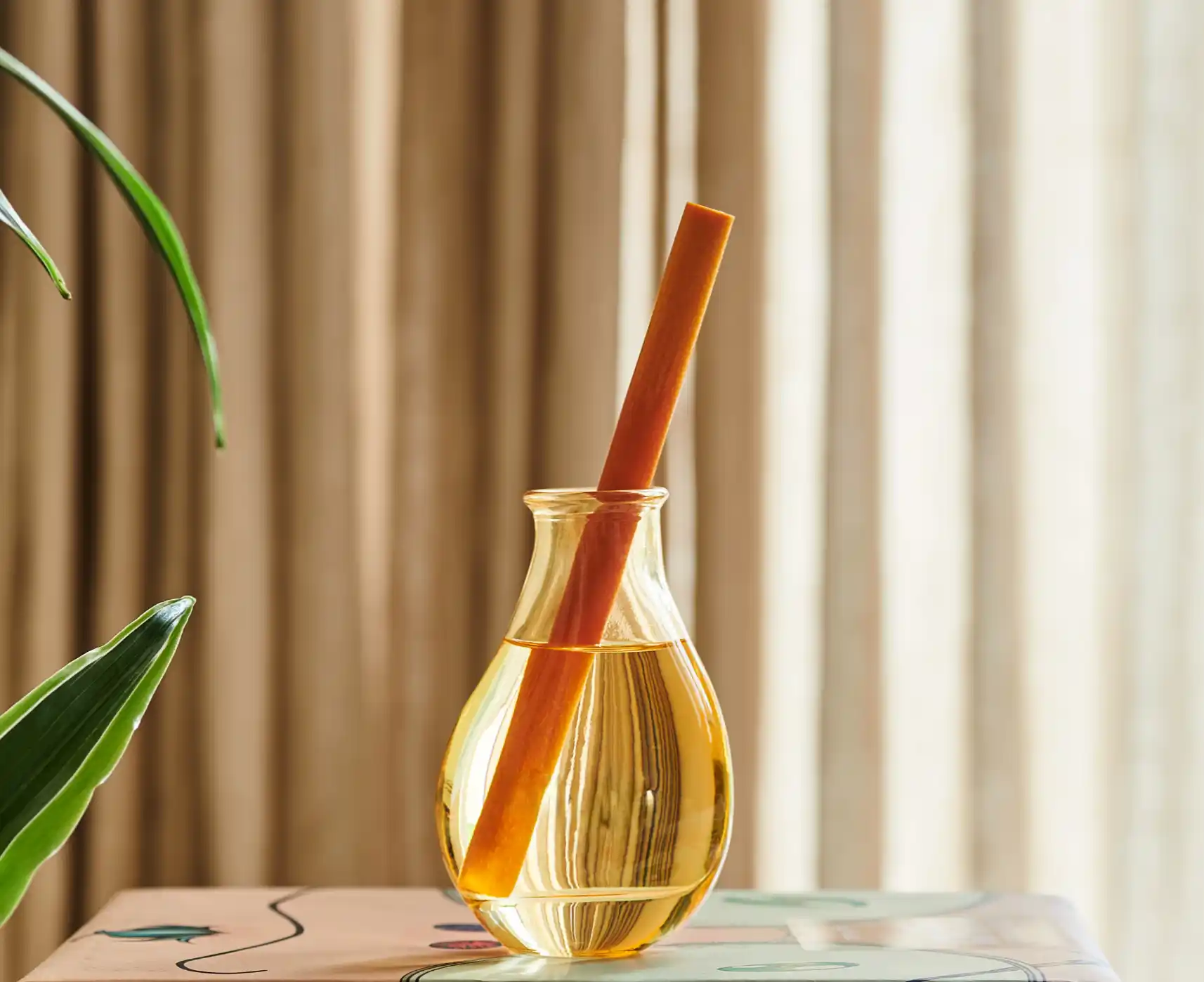



You want a diffuser that wicks clean, throws steady, and doesn’t stall after week two. That’s solvent compatibility. It isn’t magic. It’s matching solubility, evaporation, and wick behavior to your juice and your use-case. Below is a tight, practical playbook you can ship with. Real parameters. Real fixes. No fluff.
Start with fit, not vibe. If your fragrance oil won’t fully dissolve, the system will bead, haze, or gum the reeds. HSP gives you a compass: look at polarity, hydrogen bonding, and dispersion. If your concentrate is resin-heavy or holds big fixatives, pick a base with enough solvency headroom. Quick rule of thumb:
Use this logic before you argue about “throw.” Throw comes after solubility. Always.

These three set your pace and stability. They’re the daily bread in reed systems.
| Base | Typical Viscosity (cP, 20–25 °C) | Typical Surface Tension (mN/m) | Typical Flash Point (°C, closed cup) | Perceived Evap Speed | Notes | Typical Fragrance Load |
|---|---|---|---|---|---|---|
| DPG | ~70–90 | ~32–35 | ~>100 | Slow | Strong solvency; can feel “heavy” in week 1; stable tail sustain | 10–25% |
| DPM | ~3–6 | ~28–30 | ~70–80 | Moyen | Good wetting; boosts capillary start; balances DPG | 10–25% |
| DPMA | ~2–3 | ~27–29 | ~80–90 | Medium-slow | Flattens spikes; smooths out late curve; watch cold clarity | 10–25% |
Numbers are typical, not lab spec. Use them to steer.
Blending idea (baseline): Start DPM:DPG at 4:6 for broad fragrance families. Shift to 5:5 if week-one feels shy. Add 10–20% DPMA when you want a calmer, slower fade.
Sometimes you need a neutral, low-odor carrier that fully evaporates and won’t leave oily rings. Low-odor “clean” bases do this job. They’re helpful for fresh, airy profiles and hotel lobby installs where residue is not cool. Keep fragrance load in the 10–25% band unless your IFRA doc says otherwise. If you see early-week “pop” but week-three fade, blend a portion of DPG or DPMA to anchor the tail.
Ethanol brings raw lift. You’ll hear “front note pop,” “open headspace,” “instant throw.” All true. But ethanol flashes low, and it evaporates fast. Straight ethanol systems can run out of steam by week two in dry rooms. Mix it smart:
Hydrocarbon isoparaffins (e.g., Isopar L) and esters like IPM (isopropyl myristate) give low odor and higher flash points. They can tame heavy, balsamic accords. But they’re less polar. If your fragrance is very polar, you may see beading or slow start. Solve with a “bridge”:
When you nail it, hydrocarbon/ester systems feel elegant and clean on glass. When you miss, they stall and you’ll blame the reeds. Don’t.
Rattan is classic. It breathes, but it varies. Pith size changes batch to batch. Engineered fiber reeds give uniform capillary, full-length wetting, and less clog risk when your formula has resins or colorants.
Quick rig to compare wicks (do this once per base):
Reed diffusers sit in IFRA Category 10A. That means your max fragrance concentration depends on the materials in your concentrate and the exposure scenario. Always check the IFRA certificate for each fragrance. If the doc says Max 10A = 20%, don’t charge 25%. You might “feel fine” in the lab, but it isn’t compliant. Keep SDS and IFRA paperwork with each batch; it protects your brand and your customer.
If you sell where VOC rules apply, mind the limits for air care products. “LVP-VOC” (low vapor pressure VOC) components may be exempt from counting, but you must confirm a solvent qualifies. Don’t guess. Build your base to be both smelling right et counting right. If you need a regional spec (hotel chain, retail), we can tune a base for that.

Make tests boring. Boring tests prevent exciting failures later.
Bench tests you actually need:
Document everything. Photos help. Don’t rely on memory. Memory lies when deadlines hit.
No lift (smells shy, day 1–3):
Beading on reeds / “oily pearls”:
Fast fade (great week 1, then gone):
Stalled system (juice clear, reeds look wet, room is quiet):
These aren’t templates; they’re starting points to tune.
When to use: Fresh citrus, green tea, ozonic notes, places with high air turnover.
When to use: Woody ambers, florals, light gourmands.
When to use: Hotel rooms, retail fitting rooms, spa corridors.
You care about speed, repeatability, and scale. That’s our lane.
Explore lines and categories:
We’ll co-design your base to match IFRA 10A and local VOC rules, then lock the curve you want: early “pop,” steady middle, clean tail. We can also pre-blend into reed-ready bases to simplify your line fill. Less handling, fewer oops.

If a step feels extra today, it will feel cheap tomorrow when a pallet comes back. You know the drill.
“Top notes smell thin in week 1.”
Boost ethanol or DPM slightly; don’t spike total load first. If you over-load fragrance to fix thin top, you can choke reeds.
“Heavy gourmand scents go cloudy in cold.”
Pre-cut the concentrate with DPM before charging. Add DPMA to smooth the curve. Run cold cycle again.
“Hotel lobby install is strong at the door, weak at the far wall.”
Add stick count, widen placement, or spec engineered fiber reeds. Don’t just raise load; you’ll burn through.
“C-suite says ‘too much solvent smell’.”
Move toward low-odor base + DPMA anchor. Strip dyes. Keep ethanol lower.
“Ops complains the tank leaves film.”
Rinse protocol + solvent choice. Some bases dry clean; some need a warm detergent wash. Document the tank clean SOP.
Because it links three levers—solubilité, evaporation, capillary—to the outcomes you care about—lancer, stabilité, conformité. You can swap notes and still keep the curve. You can shift solvents and still pass IFRA 10A. You can cut returns, which is the only “metric” that really hurts.
And if you want a partner that moves quick and gets it right, I'Scent fits the bill. We’ve been building OEM/ODM fragrance oils and raw materials since 2005, with a library north of 40,000 formulas and a team that ships samples in days, not months. We tune bases to your wick and your channel, from boutique home fragrance to hotel chains. We’re ready when you are, we’re gonna keep it simple, and we’ll keep your curve honest.